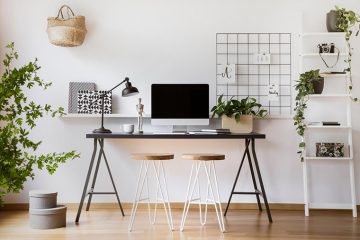The timeless charm and intricate craftsmanship of wicker chairs have captivated the hearts of countless homeowners. However, preserving their enduring beauty requires consistent care and maintenance, especially for renowned wicker brands like Braxton Culler Wicker Furniture. Within the following pages lies a comprehensive manual that reveals expert techniques for cleaning and preserving wicker patio furniture and wicker bedroom furniture, equipping you with the knowledge to protect its allure for generations to come.
Step One: Dusting and Vacuuming
Begin the journey to cleanliness by liberating your wicker furniture from loose dust and debris. Utilize a soft-bristle brush or a vacuum with a brush attachment to gently sweep across the surface, effectively removing any lingering particles. This initial step acts as a shield against dirt becoming ingrained in the delicate patterns during subsequent stages.
Step Two: Removing Stains and Spills
If localized stains or spills disrupt the tranquility of your wicker pieces, rise to the challenge armed with a mild detergent or a mixture of water and vinegar. Dip a soft cloth or sponge into the solution, ensuring it’s well-wrung, and gently blot the affected area. Carefulness is crucial, as excessive moisture could harm the fibers. Once victory over the stain is achieved, clean the area again with a clean, damp cloth, gently patting it dry.
Step Three: Thorough Cleaning
Prepare a blend of warm water and mild dish soap, or opt for a specialized wicker cleaner. Immerse a soft brush or toothbrush into the mixture and diligently scrub the wicker, leaving no corner untouched. A thorough rinse using a damp cloth concludes the battle against any remaining traces of soapy residue. Ultimately, allow your furniture the luxury of basking in the open air, free from constraints, until it luxuriates in complete dryness.
Step Four: Protection Against the Elements
The unpredictable elements pose a significant threat to the delicate nature of wicker furniture, especially the ever-present moisture. Whether these wicker treasures grace your outdoor space or adorn your sunlit sanctuary, it’s wise to shield them from rain and direct sunlight. In situations where shelter is elusive, cover the furniture with waterproof protection when not in use. In the event of sudden adverse weather, promptly move your cherished pieces to a covered haven of safety. Indoors, avoid placing wicker furniture in areas with high humidity, such as bathrooms or kitchens.
Step Five: Guarding Against Extreme Climates
Within the world of wicker, extreme temperatures are formidable adversaries. Relentless sun delights in fading and drying, while excessive heat conspires to warp and crack. Conversely, severe cold makes the wicker susceptible to splintering. It is prudent to position your wicker treasures away from sources of intense heat. When inviting sunlight into your home, use drapes and blinds as shields against its scorching rays, particularly in sun-drenched areas.
By diligently following these practices, your beloved wicker furniture, even if it’s from renowned retailers like Wicker Paradise, will remain unblemished and timeless.




